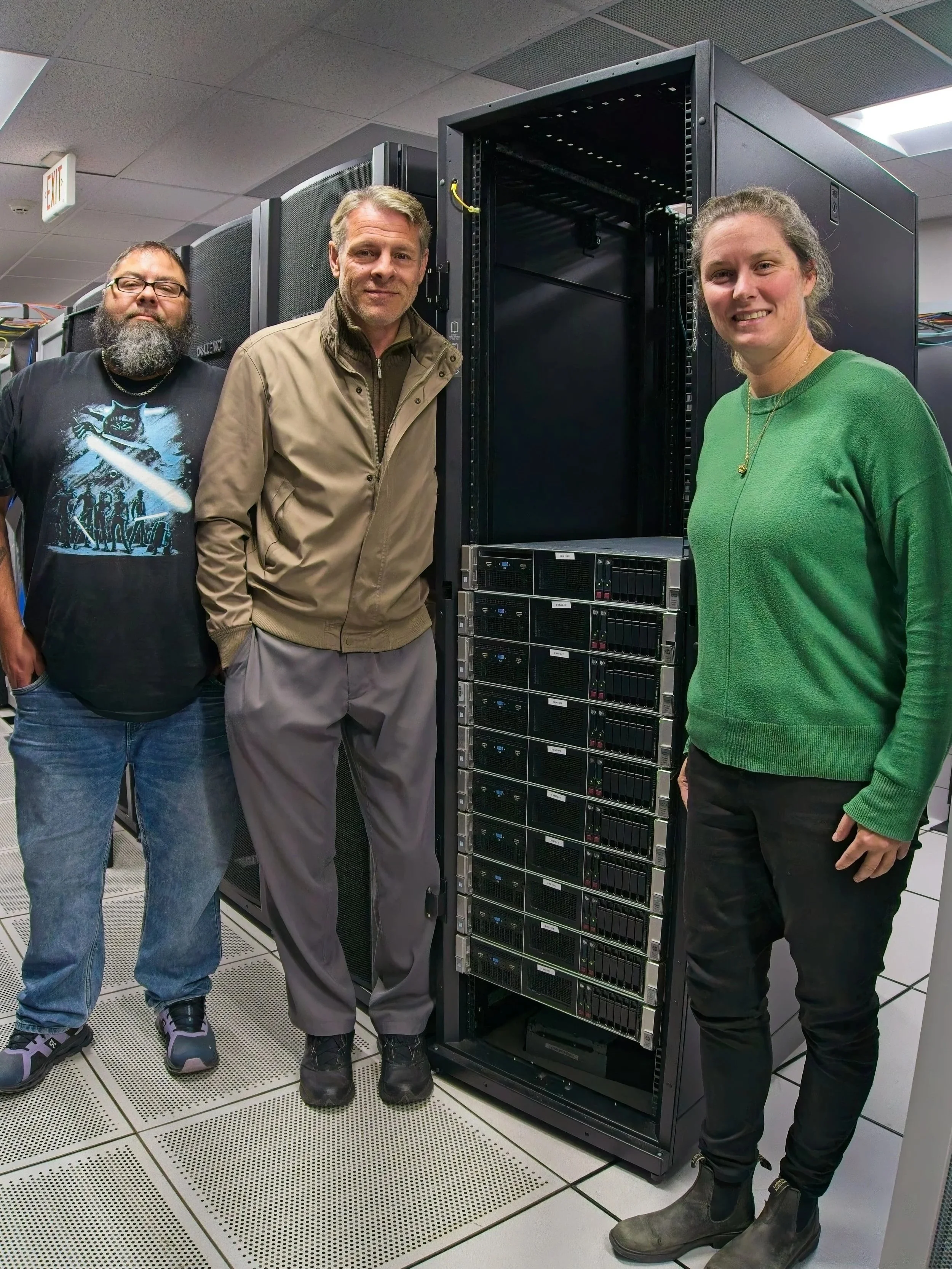640 Cores to Strengthen the Frontenac Supercomputer at Queen’s University
From left to right: Brandon Robertson (Data Center Manager), Costa Dafnas (Director, Technology Operations), and Paige Beddoe (Associate Director, Research Engagement and Strategy) at Queen’s Centre for Advanced Computing, standing beside the servers donated by Computing for Humanity to expand the Frontenac Supercomputer
Computing for Humanity (CFH) is proud to announce its latest contribution to Queen’s University: an addition of 640 CPU cores to the Frontenac Supercomputer, expanding the university’s computing power and helping researchers across disciplines accelerate their discoveries.
This marks CFH’s third donation to Queen’s since 2019, a milestone that reflects a trusted partnership built on continuity, sustainability, and shared purpose. With support from the Catherine and Maxwell Meighen Foundation, CFH built and delivered a 320-core expansion to the Frontenac Supercomputer, hosted at Queen’s Centre for Advanced Computing (CAC)—one of Ontario’s leading digital research hubs.
The CAC supports hundreds of researchers in fields such as genomics, biomedical informatics, artificial intelligence, and climate modeling, while also collaborating with the Kingston Health Sciences Centre and regional hospitals.
“The donated hardware from Computing for Humanity has had a tremendous impact on the research community at Queen’s University. By integrating it into our traditional high-performance computing (HPC) cluster, we’ve expanded capacity and improved performance for over 1,000 active users across diverse disciplines.”— Centre for Advanced Computing, Queen’s University
What 640 Cores Really Means
When we say a server has 640 logical cores (320 physical cores), we are describing the level of computing power it can deliver—essentially, how many “brains” it has to process information.
The physical cores are the real processors inside the server — imagine 320 people, each working independently on their own task.
The logical cores are like giving each person two hands, allowing them to handle two small tasks at once. Even though there are still 320 people, they can now manage up to 640 tasks in parallel.
This technology, known as multithreading, helps the server work more efficiently — completing more jobs in less time.
Advancing Science Through Circular Computing
Frontenac supports a wide spectrum of computational science — from climate modeling and materials research to molecular dynamics, bioinformatics, and fluid-mechanics simulations. By extending the cluster’s capacity, CFH helps faculty and graduate students:
Accelerate model resolution
Run larger parameter sweeps
Shorten time-to-insight
Keep data and infrastructure securely within Canada
Each server refurbished and redeployed by CFH replaces the need for new hardware purchases, reducing embedded carbon while maintaining Canada’s scientific momentum. It’s circular computing applied to the national research fabric — a model where sustainability and innovation move hand in hand.

